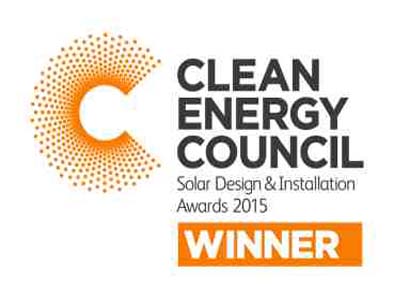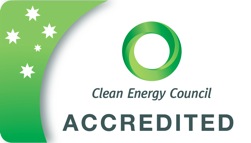Which system is suitable for you?
There are four main systems for solar hot water: a split system, a close-coupled system, a heat pump, and a combined solar and wood heating system. There is also an innovative addition which will be on the market soon.
1. The most common system these days is a split system, with the tank typically on the ground but certainly below the solar panels which are usually placed on the roof. Water naturally rises when you heat it but with a split system you are needing it to fall to the tank below so the circulation of the water needs to be done by a pump. A controller lets the pump know when it is required to operate. We supply systems with evacuated tube technology with gas or electric booster from Apricus and a flat plate technology with either Rinnai electric booster or Rinnai gas booster.
Advantages:
No large tank on the roof which may require additional roof supports |
| Power consumption for the pump and controller is small |
| With the tank on the ground, servicing of the tank if required is a lot easier |
| Whilst ever the electrics are working and the power is available, these systems have built in frost protection by pumping some hot water into the panels to prevent freezing. |
Disadvantage:
More electrical components which whilst usually very reliable can fail and all electrical components only have a 12 months warranty
2. The next most common system is a close-coupled system, with the horizontal tank on the roof with the solar panels. The water naturally circulates from the panels to the tank so is the simplest system. Available from Rinnai with either electric booster or gas booster.
Advantages:
| Less parts therefore is a simpler installation |
| Less components that can fail |
| Operates as a solar system without any power available, eg blackouts |
Disadvantages:
| May need some additional supports in the roof to support the weight of the tank |
| More prone to issues of panel damage when air temperatures drop to freezing so frost-protection models must be chosen for most locations |
| Tank service, if needed, requires roof access, so not as simple |
| Tends to have more overnight mixing of the hot and cold water layers |
Coming soon. A solar hot water system that operates from solar electric (PV) panels to run the electric elements instead of using solar hot water panels. This system has become feasible as the cost of panels has reduced. The product is currently undergoing final testing and we hope to see it released during 2013
Advantages:
• No more plumbing is needed than for a standard electric hot water system installation
• Simple installation for an electrician experienced with solar PV
• The solar PV panels have a long life with a typical 25 year warranty
Disadvantages:
• The solar PV panels will take up more room on the roof than solar hot water panels
• Extra electrical items involved which only have a 12 months warranty
QUALITY ISSUES: There are a number of quality issues associated with solar hot water.
We supply only stainless steel or copper tanks for long life, long warranties and low maintenance (anode replacements are not required). The cheaper glass-lined systems have less life, less warranty, and require periodic anode replacements as a required service.
We also supply frost protected solar hot water systems that DO NOT require glycol-type solutions and heat exchangers. This means superior performance as there are not the performance losses associated with heat exchangers (typically 10%) which is most crucial in Winter.
We supply both evacuated tube systems and flat plate systems. Evacuated tube systems require a minimum of 20º pitch and flat plate systems require a minimum of 10º pitch. However both systems will perform better at >20º pitch. We supply frames to pitch them to suitable angles and directions.
We are not locked into any specific technology or brand and are able to provide you with the solution, which is best for your specific situation.




